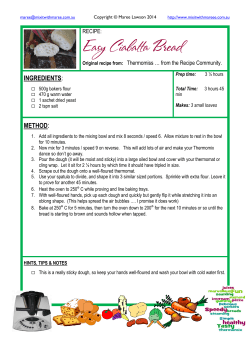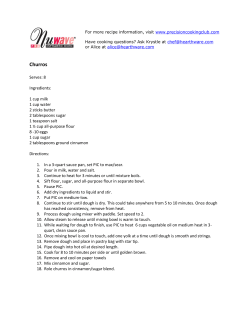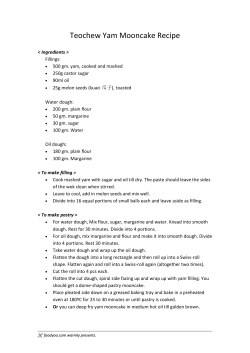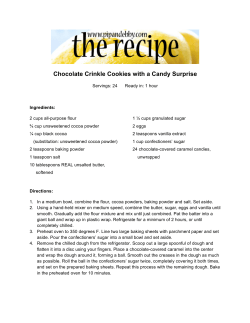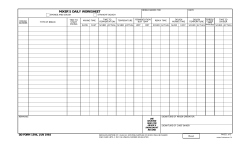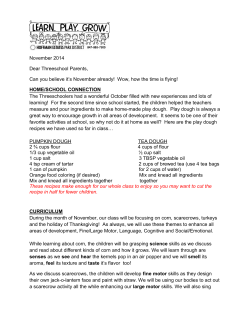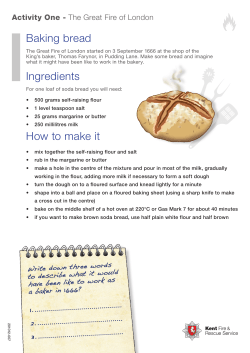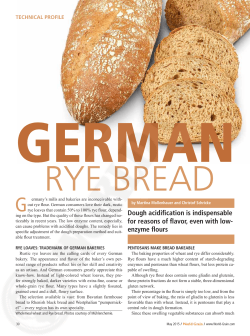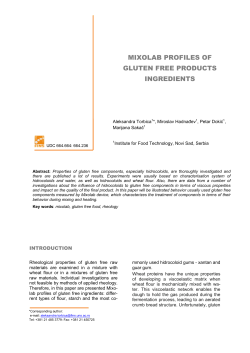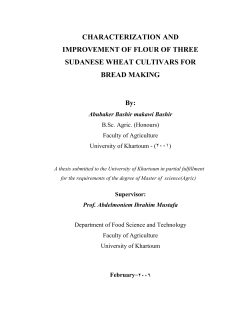
Chopin Alveograph Guide - AHDB Cereals & Oilseeds
Grain Quality The Importance of the Chopin Alveograph in the Export Market With almost a quarter of UK wheat production being exported, the successful marketing of UK cereals is increasingly dependent on an accurate and timely assessment of cereal crop quality. The Chopin Alveograph indices, such as W and p/l (see next page) are used by flour millers and others engaged in export markets, to indicate the suitability of their offerings towards making bread or biscuits. Nearly all overseas millers test wheat by Chopin Alveograph to get early indications of the resultant flour quality. The key measures used are the ratio of p to l and the W value (see next page for more details). When buying milling wheat, it is essential for millers to know the quantity and quality of protein. The following help estimate these: Protein % determines the quantity of protein Hagberg Falling Number the enzyme level indicating dough stickiness. Chopin Alveograph indicates the quality of gluten, which is hydrated protein. This is the substance that holds the loaf together, enveloping the starch: water matrix. Other tests such as Brabender Farinograph, Extensograph and wet chemistry tests such as Zeleny can also be used to provide an assessment of protein quality. When buying milling wheat, many overseas buyers will demand a Chopin Alveograph specification in addition to the standard measures of protein, Hagberg Falling Number, specific weight and moisture, irrespective of its origin. In general the protein quality, and thus the Chopin Alveograph values, are inherent in a variety and are not greatly affected by environmental conditions or crop treatments. This factor makes varietal purity at sowing and varietal segregation in store of key importance when supplying to meet overseas customers' requirements. British Cereal Exports, HGCA, Caledonia House, 223 Pentonville Road, London N1 9HY Tel: +44 (0) 20 7520 3925 Fax: +44 (0) 20 7520 3902 Email: bce@hgca.com Web: www.hgca.com How does the Chopin Alveograph work? What the graph means W= L= P/L = baking strength of dough (the area under the curve) extensibility of dough (time taken for bubble to burst) dough strength and extensibility (ratio of curve height to length) High W = P= Low P/L = strong flour maximum pressure required very extensible and low strength nabim Group 1 nabim Group 2 nabim Group 3 nabim Group 4 • high pressure (P) • long time (L) to burst Suitable for bread and baking flours – most varieties having bread-making potential. Stage 3 & 4 Dough produced and formed into a disc Typical range Alveograph P/L Alveograph W P W Stage 1 Wheat conditioned to standard moisture Stage 2 Wheat milled and left to rest Typical characteristics of different wheat varieties Suitable for bread flour – makes strong elastic dough and has excellent bread-making potential. Five stages of the Alveograph test take place over three days 0.5 - 0.9 >200 L Stage 5 Air is pumped into dough to test resistance and elasticity Typical range Alveograph P/L Alveograph W P W • low P/L ratio important 0.4 - 0.9 170 - 310 L Suitable for biscuit and blending flours – makes extensible dough, good for biscuits and blending with strong wheats. • low pressure (P) • long time (L) • area under the curve (W) less critical Typical range Alveograph P/L Alveograph W P W 0.2 - 0.4 70 - 100 L Chopin Alveograph showing stage 5 air being pumped into dough Typical range Suitable for animal feed only – makes tough, inelastic dough • high pressure (P) • short time (L) to burst Alveograph P/L Alveograph W P W L 0.3 - 1.5 60 - 140 British Cereal Exports is the Export Promotion Department of the HomeGrown Cereals Authority
© Copyright 2025


